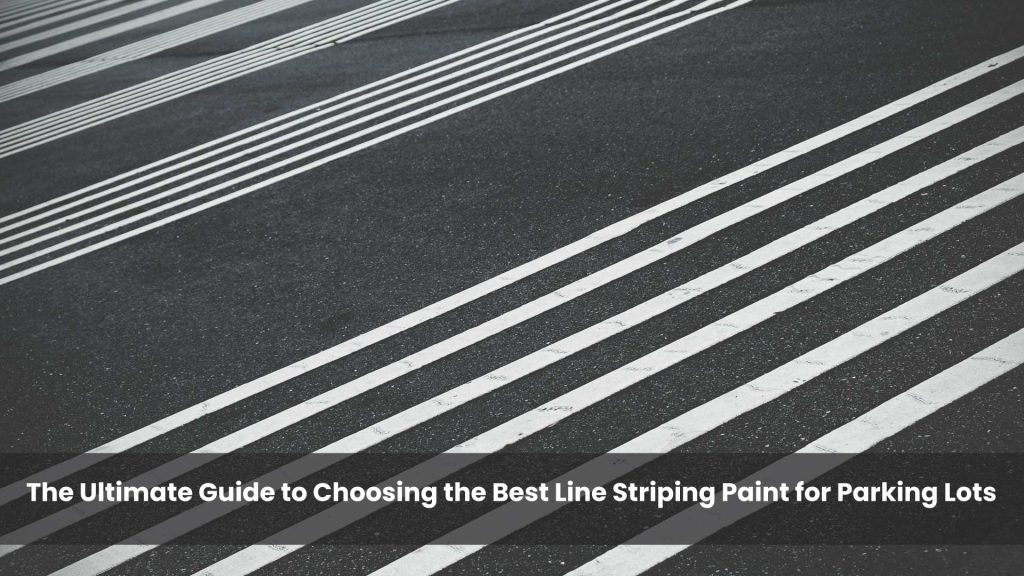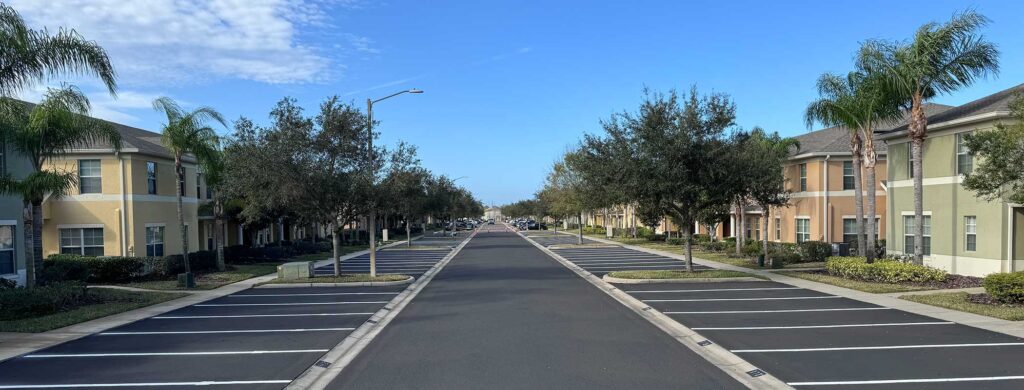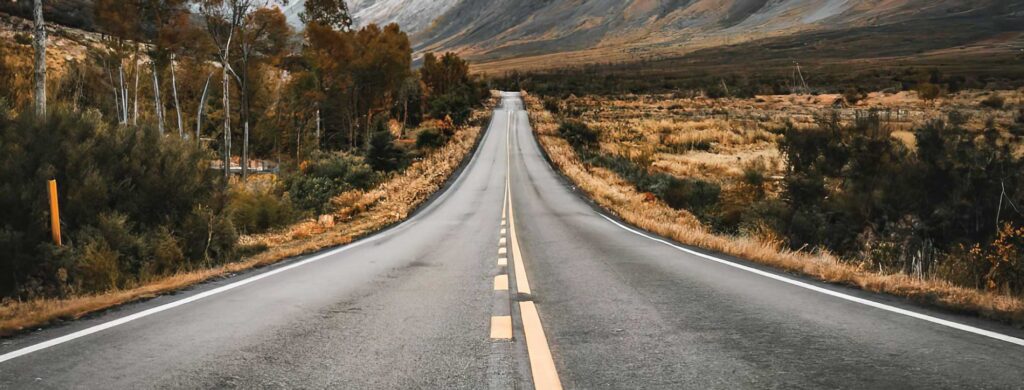Line striping is an important part of parking lot maintenance, not only to maintain the organization in your space but also for safety and appearance. From bold commercial parking areas to dingy smaller lots, your line striping paint will be vital in determining how clear and long-lasting it is. This is the most complete guide to choosing the perfect line striping paint for your parking lot.
Why Line Striping Paint Matters
The thing about lines in a parking lot, was that they were put there for a reason. A parking lot with striping that directs both traffic and pedestrians helps you set aside specific spaces for cars. Guide people from the surrounding area to buildings as they walk across your property. Clean and well-maintained line striping not only benefits the drivers from knowing when to merge or change lanes. It can also protect property owners/liabilities if an accident were ever to occur, a pedestrian injured during a poor lighting night needs guidance on which lane they are actually walking in and where one would walk off stopping points.
By choosing the best line striping paint, you get all these benefits and more — longer-lasting results so fewer times that refresher paints would need to be done (saving money on repainting long term) plus higher visibility. So what do you use to paint the stripes? Let’s talk about types of stripping paint that is suitable for various applications.
1. Types of Line Striping Paint
There are two primary types of line striping paint that are commonly used for parking lots:
- Water-Based Paint (Latex): This type of paint is widely used for parking lots due to its environmental friendliness and ease of use. Water-based paints dry quickly, are low in volatile organic compounds (VOCs), and are safe for most surfaces. They are ideal for light to moderate traffic areas.
- Oil-Based Paint: Oil-based paint is known for its durability and resistance to wear and tear. It’s suitable for high-traffic areas where heavy vehicles are frequent. Oil-based paints may take longer to dry and often require solvent cleaning, but their longevity and resilience make them a popular choice for large commercial lots.
2. Consider the Surface Type
Before purchasing line striping paint, it’s essential to evaluate the surface of your parking lot. Common parking lot surfaces include:
- Asphalt: Asphalt is the most common surface for parking lots. Both water-based and oil-based paints work well on asphalt, but water-based paint is usually preferred for its eco-friendliness.
- Concrete: Concrete surfaces are more durable than asphalt, and water-based paint is a popular choice due to its quick drying time. However, oil-based paints may offer better adhesion on rough or textured concrete.
3. Weather Resistance and Durability
Outdoor parking lots are exposed to various weather conditions, such as rain, snow, and UV rays. Therefore, choosing a line striping paint with excellent weather resistance is crucial. The best line stripping paints are formulated to withstand the following:
- UV Rays: Over time, exposure to the sun can cause paint to fade, especially in areas with high UV intensity. Look for paints that offer UV resistance to prevent premature fading.
- Moisture and Rain: In regions with frequent rain or snow, moisture can degrade poorly formulated paint. Choose paints designed to resist water penetration and fading from weather exposure.
- Temperature Fluctuations: Extreme temperature changes can cause paint to crack or peel. Durable line striping paint should maintain adhesion even in fluctuating temperatures.
4. Reflectivity and Visibility
For parking lots that need enhanced visibility at night or during low-light conditions, reflective line striping paint is an excellent option. Reflective paint contains glass beads or other reflective materials that improve the visibility of parking lot lines under headlights.
- Non-Reflective Paint: Standard paints are sufficient for parking lots that don’t require nighttime visibility. However, for safety and guidance in poorly lit areas, consider investing in reflective paint.
5. Drying Time
The drying time of line striping paint can affect how soon you can reopen your parking lot after repainting.
- Water-Based Paint: Known for quick drying, this type of paint usually dries within 30 minutes to an hour, making it ideal for parking lots with minimal downtime.
- Oil-Based Paint: Oil-based paint may take several hours to dry, depending on the temperature and humidity levels. While it requires more downtime, its durability can make the wait worthwhile in high-traffic areas.
6. Application Method
The ease of application is another factor to consider. Line striping paint can be applied manually or using specialized striping equipment.
- Manual Application: Smaller parking lots can be striped manually with rollers or brushes. This method is cost-effective but may be less precise.
- Striping Machines: For larger lots or precise line work, investing in or hiring a professional with a line striping machine can save time and ensure consistent results. Machines also allow for quick paint application, particularly if you’re working with fast-drying water-based paints.
7. Compliance with Regulations
Local regulations also dictate (in California, the ADA, or Americans with Disabilities Act, for example). According to the ADA, accessible parking must be properly marked with the corresponding minimum quantity and placement. During application, ensure that the line striping paint you use meets your local codes and adheres to proper spacing and dimensions.
8. Eco-Friendly Options
Because environmental issues are really in the news these days, it is certain that businesses need to find a way of resolving their demands and remaining eco-friendly. Low- or zero-VOC line striping paints release fewer harmful emissions, enhance workers’ safety, and limit environmental impact. Many of these paints get classified as water-based paint, which is a top choice if you are conscious of environmental issues.
9. Cost Considerations
The cost of the line striping paint will depend on its quality, but using a better solution is often more economical in the long run. Less expensive paints wear off sooner and will need re-striping more often. However, if you add in longevity, paint durability, and maintenance type requirements to the total cost, then paint is 3 or even closer yet.
Final Thoughts
There are a number of factors for you to think about, including what type of paint they use, the condition of the surface, and whether or not it can withstand certain weather conditions, among other important qualifications. This includes making sure that all regulations have been passed. Making the correct choice between water-based and oil-based paint will keep your parking lot safe, organized, and looking appealing for years to come.
Road StripingNo matter if you are doing the striping yourself or having it done, buy a good paint. Apply as recommended to get better results. Not only will this enhance the look of your parking lot, but it will also take away a need for constant maintenance and save you time and money.
About the Author: Express Asphalt Solutions (EAS)
Express Asphalt Solutions is Florida’s trusted provider of high-quality asphalt solutions, specializing in paving services, sealcoating, and asphalt repair. Our expert team delivers durable, cost-effective solutions tailored to enhance the safety, functionality, and visual appeal of your driveways, parking lots, and commercial properties.
From precise asphalt paving and resurfacing to professional parking lot striping and long-lasting sealcoating, EAS ensures every project meets the highest industry standards. Whether you own a residential community, retail center, or commercial facility, our premium asphalt services provide long-term protection and superior curb appeal.
Experience the difference with Express Asphalt Solutions—where quality, efficiency, and customer satisfaction come first. Contact us today for a free quote and let us transform your pavement with expert craftsmanship!
See what our satisfied clients have to say here!
"*" indicates required fields




